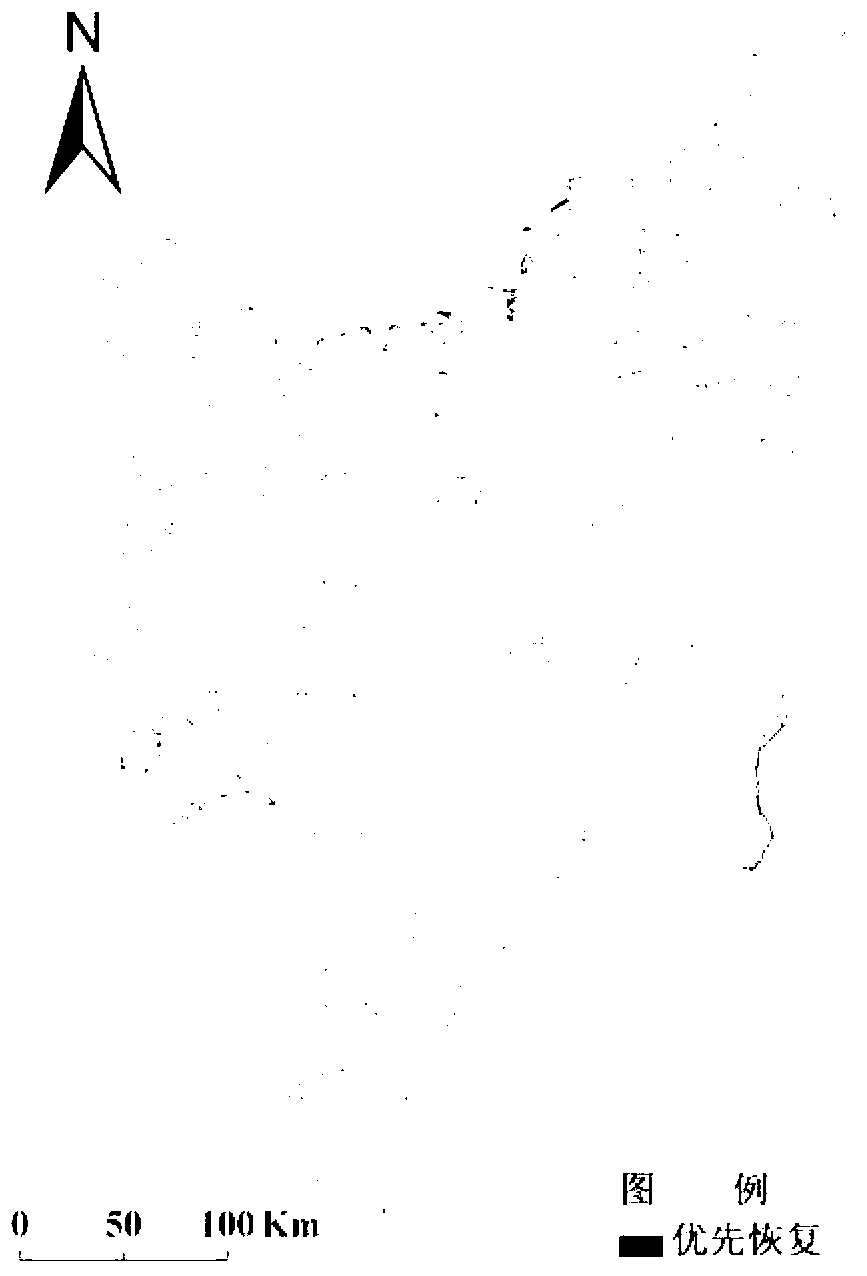Method for determining natural wetland restoration plan based on remote sensing images and GIS (geographic information system) spatial analyses
A technology for spatial analysis and restoration schemes, applied in special data processing applications, instruments, climate change adaptation, etc., can solve problems such as research, analysis focusing on positioning, and not from a quantitative perspective, and achieve large-scale wetland restoration and wetland restoration. The effect of increasing the area
- Summary
- Abstract
- Description
- Claims
- Application Information
AI Technical Summary
Problems solved by technology
Method used
Image
Examples
specific Embodiment approach 1
[0015] Specific implementation mode 1. Combination figure 1 This specific embodiment will be described. A method for determining a natural wetland restoration scheme based on remote sensing images and GIS spatial analysis, which includes the following steps:
[0016] Step 1: Obtain initial data and unify the initial data;
[0017] The initial data includes land use data, DEM data, river / road density data, landform data and NPP product data;
[0018] Step 2: Use the initial data to calculate the landscape structure factor, the DEM data to calculate the humidity index, and the NPP product data to divide the cultivated land productivity level;
[0019] Step 3: Assign grades to the landscape structure factors, river / road density data, landform data, humidity index, and cultivated land productivity obtained in Step 2, and evaluate wetland restoration;
[0020] Step 4: Based on the wetland restoration assessment results obtained in Step 3, combined with GIS spatial analysis, dete...
specific Embodiment
[0055] Specific examples: combining figure 2 and image 3 This specific example will be described.
[0056] Using the method of natural wetland restoration combined with remote sensing and GIS to realize the spatial restoration of natural wetland in Sanjiang Plain. The specific operation steps are as follows:
[0057] Obtain plain data and process the original data. The data involved include land use data; DEM data; river and road density data; landform data and Modis NPP product data. The land use data is obtained from TM remote sensing images through manual visual interpretation; the river and road vector data are extracted from the land use data. Under the ArcGIS9.3 data processing platform, the Line Density command is used to generate the river and road density maps respectively. Geomorphic data is generated by scanning, digitizing and cartographically integrated 1:250,000 geomorphic map. According to the analysis requirements in this paper, the geomorphic types are divi...
PUM
 Login to View More
Login to View More Abstract
Description
Claims
Application Information
 Login to View More
Login to View More - R&D
- Intellectual Property
- Life Sciences
- Materials
- Tech Scout
- Unparalleled Data Quality
- Higher Quality Content
- 60% Fewer Hallucinations
Browse by: Latest US Patents, China's latest patents, Technical Efficacy Thesaurus, Application Domain, Technology Topic, Popular Technical Reports.
© 2025 PatSnap. All rights reserved.Legal|Privacy policy|Modern Slavery Act Transparency Statement|Sitemap|About US| Contact US: help@patsnap.com



